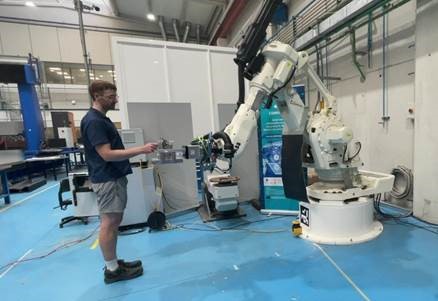Improving Posture in Human-Robot Collaboration: Enhancing Efficiency and Worker Well-Being
Human-Robot Collaboration (HRC) offers the potential to combine human intuition and expertise with robotic strength and precision, revolutionizing workplace efficiency. However, ensuring intuitiveness, safety, and comfort in these interactions is crucial. One significant factor in optimizing HRC is improving worker posture through adaptive robotic movements, which can personalize workstations and enhance both acceptance and productivity.
How Robots Optimize Human Posture
A key component of this optimization is the robot’s ability to adjust its position based on the ergonomic needs of the worker. Using a stereo camera, the system captures depth data to create real-time 3D images of the worker, marking critical joint and movement keypoints. This process generates a dynamic kinematic model, continuously monitoring the worker’s posture without requiring them to remain stationary.
The system evaluates posture using predefined ergonomic criteria, such as those in DIN 1005-4 and ISO 11226 standards, which establish safe limits for joint movements. By applying an ergonomic cost function, the system assigns low costs to safe movements and higher costs to potentially harmful postures. The robot then adjusts its position to minimize these costs, improving worker posture and reducing the risk of injury.

The Virtual Workspace: Combining Human and Robot Models
In a virtual environment, the system integrates the worker's kinematic model with the robot’s. Task parameters—such as the robot's gripper position and the worker’s hand placement—define this collaborative setup. The system uses mathematical optimization to evaluate various configurations, seeking to minimize ergonomic costs.
Before the worker begins a task, the robot moves to an optimized position based on these calculations, ensuring it is ergonomically aligned and ready to assist. During the task, the system continues monitoring the worker’s posture to validate data while maintaining the robot's static position. This makes the approach feasible even with robots not designed for direct human interaction.
Real-World Impact and Proven Benefits
This innovative system was successfully demonstrated at AIMEN Centro Technológico in Spain. Tests with workers of different sizes revealed significant ergonomic improvements, reducing costs by 52% for smaller individuals and 24% for taller ones. The system’s adaptability means it can accommodate a wide range of personnel, automatically customizing robot positioning for each user.
Minimal Requirements, Maximum Benefits
Integrating this posture optimization system into existing facilities requires minimal infrastructure: a robot, a stereo camera, a computer, and network connectivity. This makes it a cost-effective solution for improving workplace ergonomics and fostering healthier, more inclusive environments.
By enhancing human-robot collaboration with ergonomic optimization, this approach not only boosts efficiency but also promotes well-being and adaptability, setting a new standard for collaborative workspaces.

